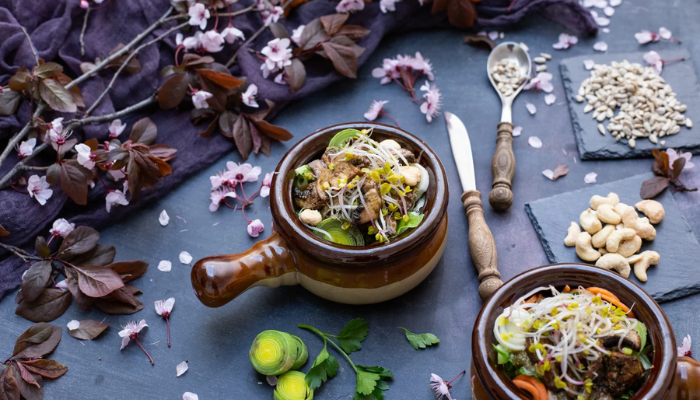Soutaipasu is a mysterious yet captivating term that has sparked curiosity among language enthusiasts, cultural researchers, and individuals searching for deeper meaning in their everyday lives. From its debated origins in traditional communities to its role in modern identity, soutaipasu embodies more than a word—it symbolizes balance, continuity, and the blending of heritage with the present moment.
In this article, we’ll dive deep into what soutaipasu truly represents, trace its historical background, uncover its cultural applications today, and explore how it can enrich your personal journey. Whether you’re new to the term or eager to expand your understanding, this guide provides an engaging and insightful perspective.
What Is Soutaipasu? Understanding the Core Meaning
At its essence, soutaipasu is not a single, rigid definition. Instead, it represents an idea that transcends straightforward translation. Many interpret it as a concept that embodies balance—between tradition and innovation, individuality and community, roots and change. This flexibility gives the term a layered quality, making it both personal and universal.
The beauty of soutaipasu lies in its adaptability. In one context, it can describe emotional harmony; in another, it reflects cultural identity. For some, it serves as a reminder of heritage, while for others it becomes a guiding principle for navigating modern life’s complexities. In every usage, soutaipasu carries with it a sense of grounding and connection.
The Origins and Historical Evolution of Soutaipasu
The origins of soutaipasu are rooted in traditions that emphasized storytelling, continuity, and the preservation of community values. Passed down through oral histories and cultural practices, it reflected the desire to maintain balance in both personal and collective life. This background makes soutaipasu more than just language—it is a cultural inheritance.
Over time, soutaipasu evolved. With migration, modernization, and global exchange, the term began to shift in meaning. No longer confined to its earliest roots, it took on new dimensions in literature, art, and even digital expression. Its journey illustrates how cultural concepts transform as societies change, proving that language is never static but a living, adaptive force.
Soutaipasu in Today’s World: Culture, Media, and Identity
In the modern era, soutaipasu has emerged as a cultural touchstone for those exploring identity in a rapidly changing world. It frequently appears in creative works—poetry, essays, visual art—where it captures the tension between preserving tradition and embracing innovation. For many, it resonates as a reminder that identity is both rooted in heritage and shaped by the present.
Digital media has amplified soutaipasu’s presence. Social platforms, blogs, and forums have become spaces where people use the term to articulate nuanced feelings of belonging, disconnection, or balance. Its appeal lies in its versatility: soutaipasu can mean grounding oneself in heritage, or it can mean finding equilibrium in modern life. Its flexibility has made it a symbol of contemporary cultural dialogue.
How to Apply Soutaipasu: Personal Practice and Mindful Living
Understanding soutaipasu is one thing; living it is another. For those wishing to apply its essence, mindfulness is a natural starting point. Taking time to reflect on what feels stable in your life and what feels in transition mirrors the balance that soutaipasu represents. Practices like journaling, meditation, or connecting with nature can help embody this principle.
Creative expression is another way to live soutaipasu. Whether through writing, painting, music, or dance, giving form to the intangible aspects of balance allows the concept to become personal. Community practices—listening to elders, preserving traditions, or engaging in cultural rituals—also provide real-world ways to ground the meaning of soutaipasu in daily life. It becomes not just a concept, but a lived experience.
Challenges, Misconceptions, and the Future of Soutaipasu
Like many culturally rich terms, soutaipasu faces challenges. One common misconception is that it is merely a trend or buzzword. Another is that its meaning can be easily detached from its deeper cultural significance. Such oversimplifications risk reducing soutaipasu to something shallow, stripping away the layers that make it meaningful.
Looking ahead, the future of soutaipasu depends on how it is carried forward. As globalization continues, it will likely spread into new contexts, but preserving its essence will require mindfulness. Its strength lies in its adaptability, but without respect for its roots, its depth could be lost. The challenge is to let soutaipasu grow while still honoring the traditions that shaped it.
Conclusion
Soutaipasu is more than a word—it’s a symbol of harmony, resilience, and cultural continuity. It connects the past to the present, offering a framework for living with balance in an ever-changing world. For some, it may be a philosophy; for others, a creative spark; and for many, a reminder of the importance of honoring tradition while embracing change.
In a world moving faster than ever, soutaipasu reminds us that meaning lies not in extremes but in the spaces between them. By understanding and living this concept, we tap into a timeless wisdom: the art of balance.
Frequently Asked Questions (FAQs)
- What does “soutaipasu” mean?
It is a layered term symbolizing balance, heritage, and the blending of tradition with modern life. - Where did soutaipasu originate?
Its roots trace back to cultural traditions and oral storytelling that emphasized continuity and community. - How has soutaipasu evolved over time?
It has shifted from traditional contexts to modern literature, art, and digital media, expanding its meaning. - Why is soutaipasu important today?
It resonates with those navigating identity and balance in an increasingly fast-paced, globalized world. - Can soutaipasu be practiced in daily life?
Yes—through mindfulness, creative expression, cultural rituals, and reflection on heritage and identity. - Is soutaipasu tied to a specific culture?
While it originates in tradition, it has grown beyond its roots and now appeals to diverse cultural contexts. - What are common misconceptions about soutaipasu?
That it is simply a trend or that it lacks depth when removed from its cultural origins. - How does soutaipasu appear in modern culture?
It shows up in literature, art, online discussions, and cultural commentary about balance and belonging. - What personal benefits can soutaipasu offer?
It encourages grounding, mindfulness, creative growth, and a deeper sense of cultural or personal identity. - What does the future of soutaipasu look like?
It will likely continue to evolve, spreading into new contexts while requiring effort to preserve its depth and roots.



